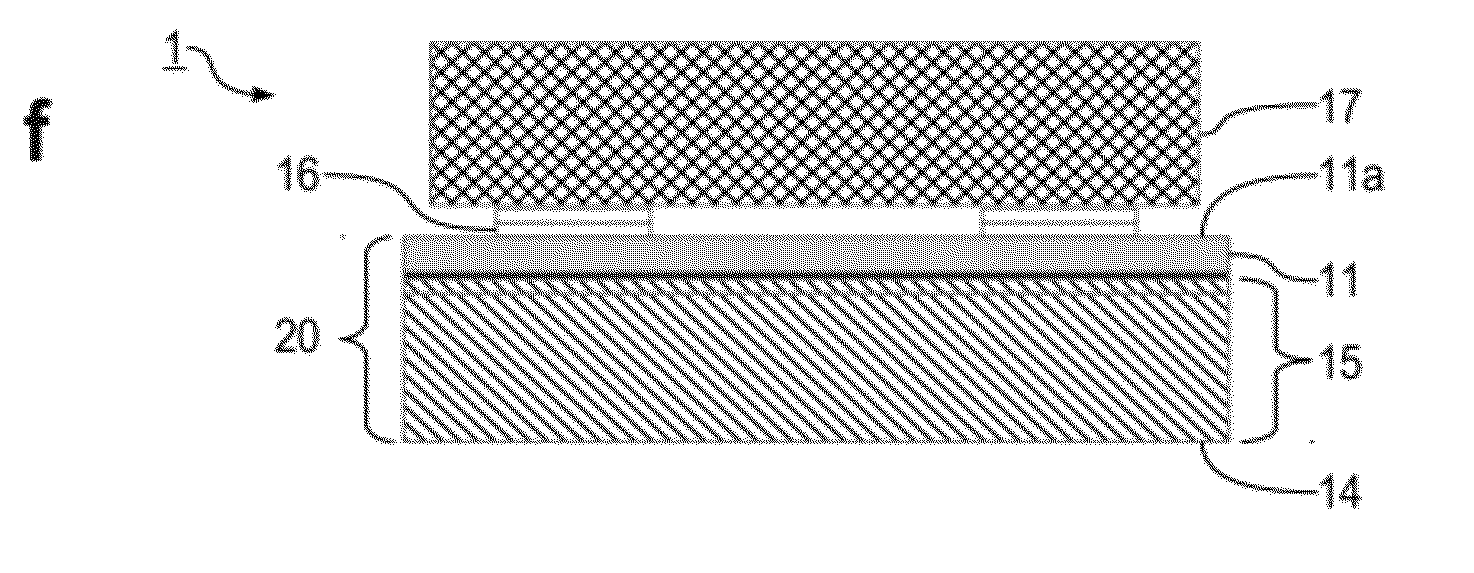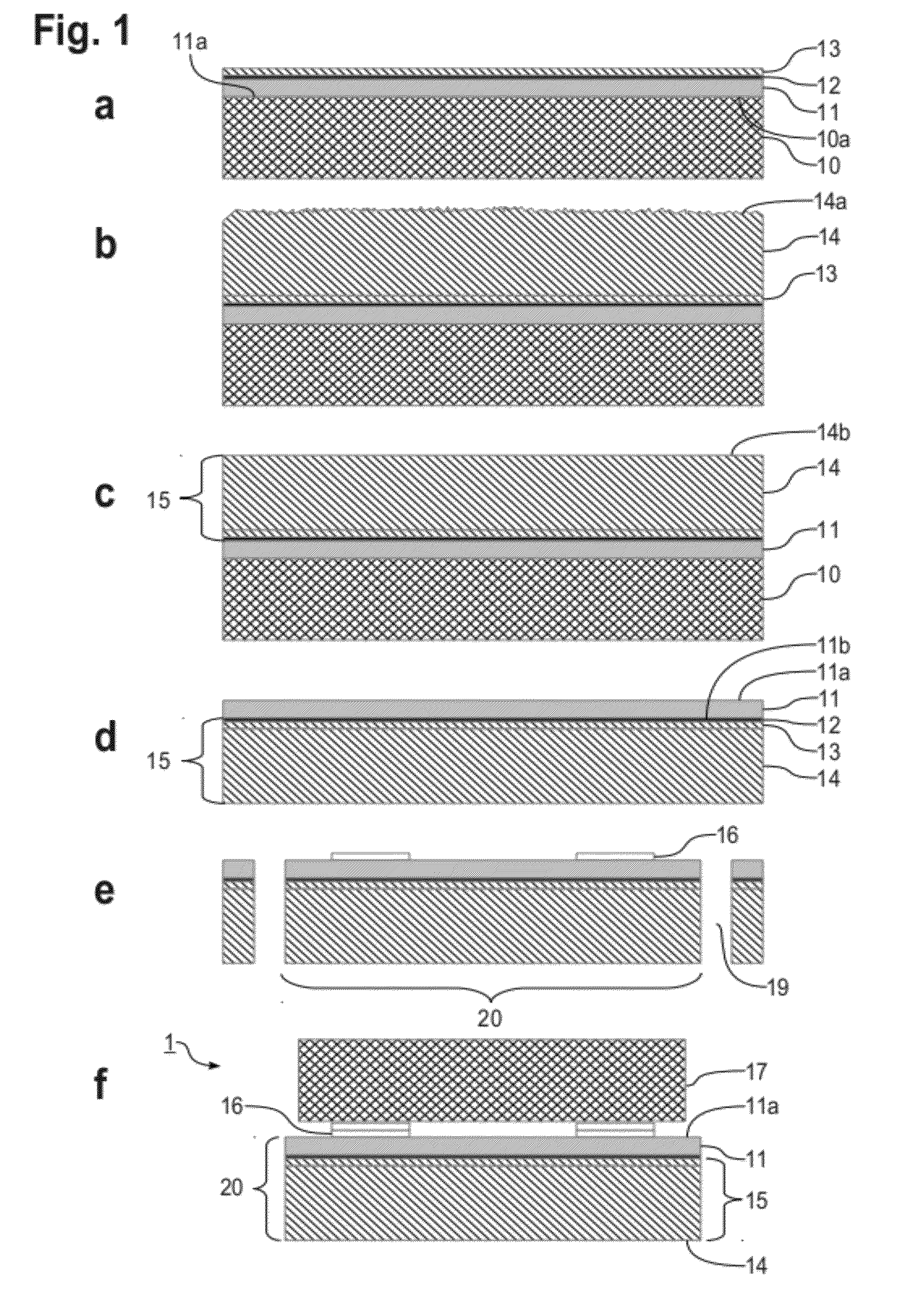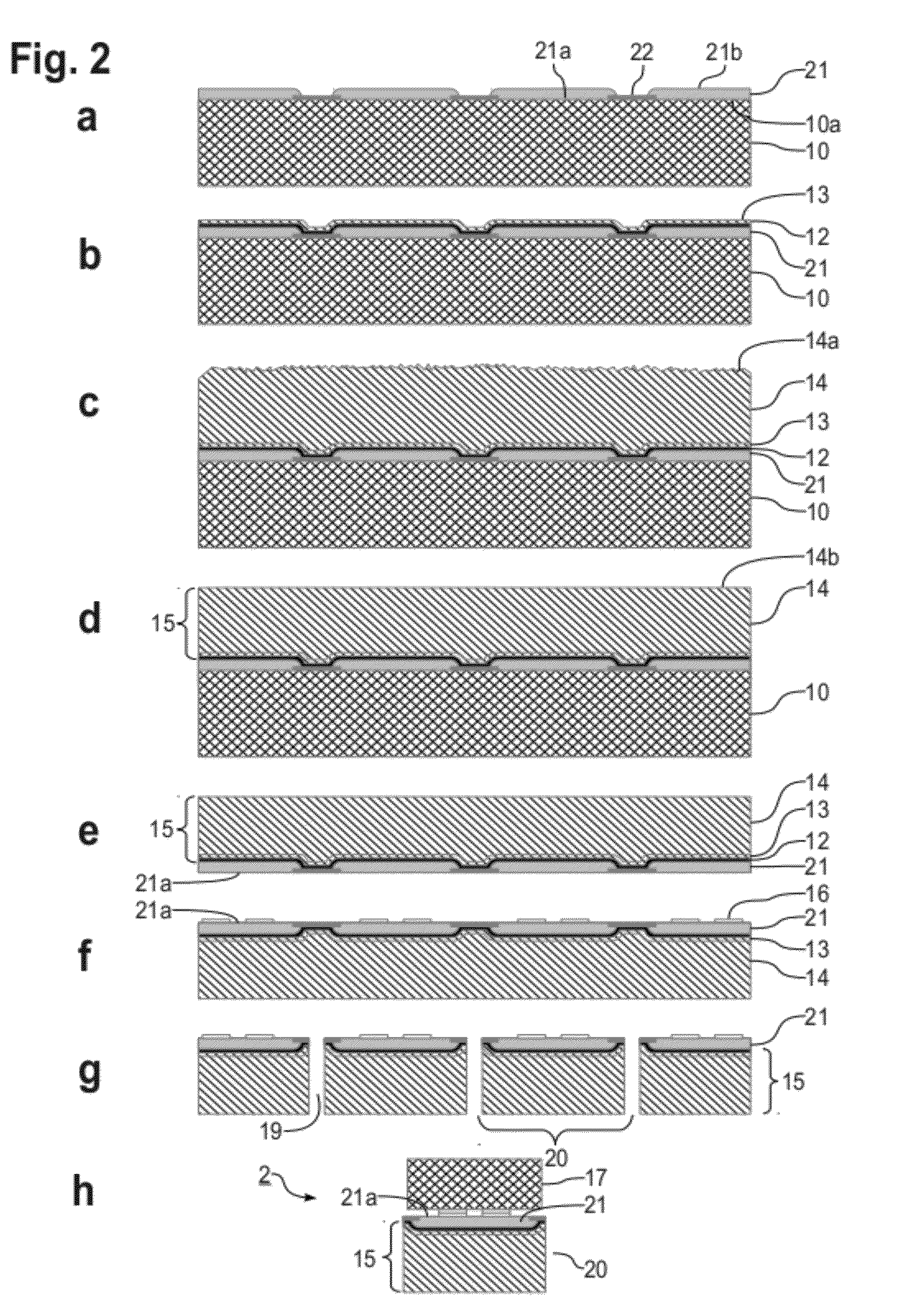Method of fabrication, device structure and submount comprising diamond on metal substrate for thermal dissipation
a technology of semiconductor devices and sub-containers, which is applied in the direction of electrical equipment construction details, instruments, power amplifiers, etc., can solve the problems of limited heat dissipation of the substrate on which the device is mounted, the reliability, performance, power consumption and other factors of the operation of high-power semiconductor devices, and the limited thermal management capabilities of the device. , to achieve the effect of facilitating heat transfer, reducing the functionality of the hindering device or subsequent processing, and reducing the cost a semiconductor device structure and technology of heatsinks, a semiconductor device structure and sub-mounting and fabrication a technology of device structure and sub-mounting and fabrication, which is applied in the field of which is applied in the field of heatsink thermal management and other problems, can solve the problem of the device, the problem of the a technology of heatsink heat management and semiconductor device structure and sub-mounting and fabrication and semiconductor device technology, applied in the field of semiconductor device structure and sub-mounting and fabrication and semiconductor device technology, applied in the field of semiconductor device structure and sub-moun
- Summary
- Abstract
- Description
- Claims
- Application Information
AI Technical Summary
Benefits of technology
Problems solved by technology
Method used
Image
Examples
first embodiment
[0039]A method of fabricating a device structure 1 comprising a diamond on metal substrate or submount 20 according to the invention is illustrated in FIGS. 1a to 1f. The resulting device structure 1, shown in FIG. 1f, comprises a high power semiconductor device or chip 17 and a chip submount 20 comprising an HTC metal substrate 15 and a top layer 11 of HTC diamond, which has a smooth surface 11a of a required surface roughness, preferably 16 are defined on the diamond surface 11a for bonding the chip 17 to the diamond layer 11. In this embodiment, the metal substrate 15 is preferably copper and it comprises a thin first layer 13 of deposited copper, e.g. sputtered copper, which forms a plating base layer for a thicker second layer of electrodeposited copper 14. An adhesion layer 12 comprising a layer of sputtered Ta is provided between Cu layer 13 and the HTC diamond layer 11.
[0040]By using a fabrication sequence including a sacrificial polished silicon substrate, a layer 11 of lar...
second embodiment
[0049]Dicing the substrate, e.g by cutting dicing streets 19 to create a plurality of thermal dissipation structures or submounts 20 (FIG. 1e), of desired sizes, can be performed either before or after the formation of the conductive leads 16. Preferred dicing methods are laser dicing or abrasive jet dicing. Alternatively, the diamond layer can be patterned by reactive ion etching (RIE) or inductively-coupled plasma RIE (ICP-RIE) through a silicon dioxide (SiO2) or other hard mask (e.g. 1-3 μm thick) as described by Moldovan et al. (Journal Vac. Sci. Technology, B, 27 (6) pp. 3125-2121, 2009), prior to dicing, to avoid dicing through the hard material. A thicker hard mask layer may be required for thicker diamond films. That is, the etch rate selectivity of the ICP-RIE process may not be sufficient if a relatively thin (˜1 um) layer of SiO2 is used as a mask with a relatively thick diamond layer (˜>5 um). Alternative dicing methods are presented in the
[0050]The resulting structure o...
PUM
| Property | Measurement | Unit |
|---|---|---|
| Thickness | aaaaa | aaaaa |
| Thickness | aaaaa | aaaaa |
| Thickness | aaaaa | aaaaa |
Abstract
Description
Claims
Application Information
 Login to View More
Login to View More - R&D
- Intellectual Property
- Life Sciences
- Materials
- Tech Scout
- Unparalleled Data Quality
- Higher Quality Content
- 60% Fewer Hallucinations
Browse by: Latest US Patents, China's latest patents, Technical Efficacy Thesaurus, Application Domain, Technology Topic, Popular Technical Reports.
© 2025 PatSnap. All rights reserved.Legal|Privacy policy|Modern Slavery Act Transparency Statement|Sitemap|About US| Contact US: help@patsnap.com



